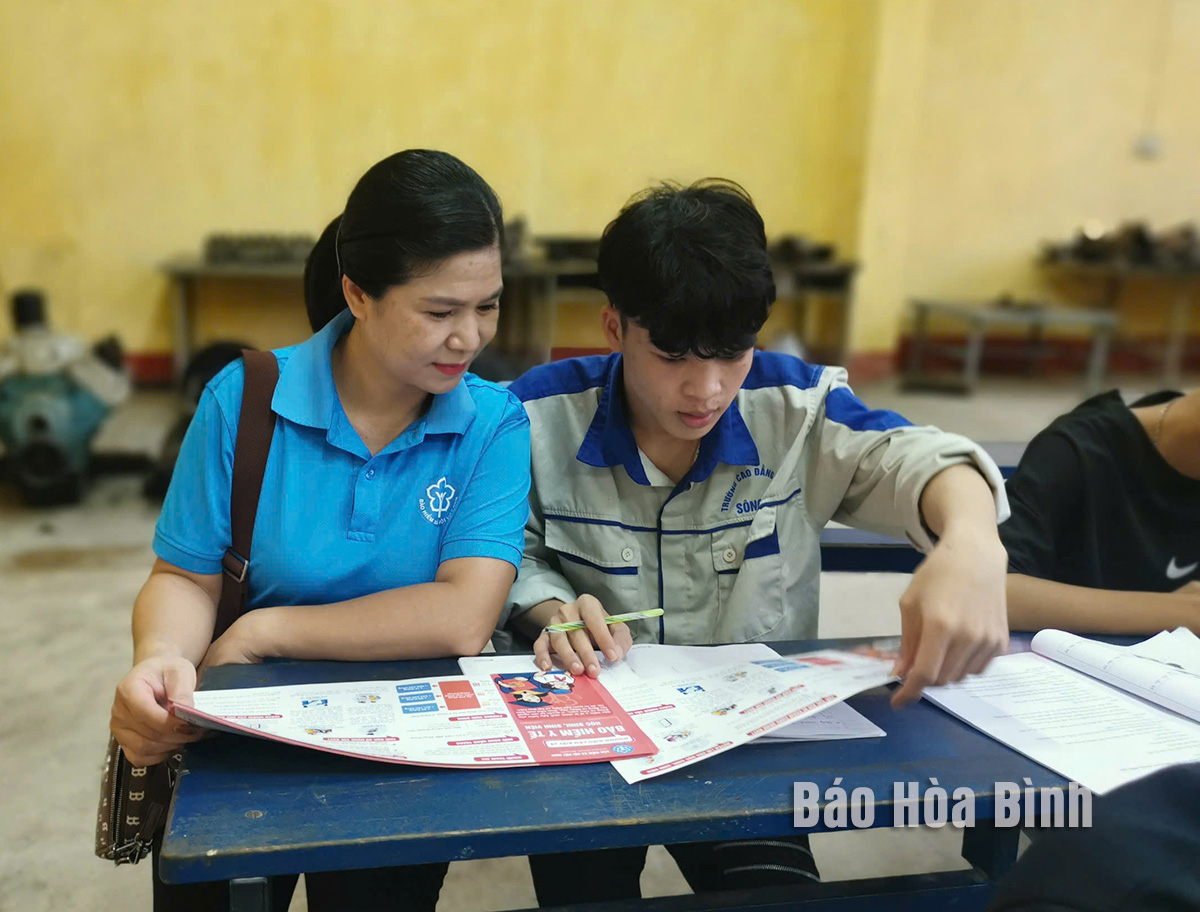
Hoa Binh Social Insurance has played a key role in ensuring social security for nearly 30 years since its establishment in 1995.

vincial social insurance staff introduce student health insurance policies
at Song Da vocational college.
Despite challenges, the agency has successfully expanded coverage and improved
policy implementation, solidifying its position as a pillar of social welfare
in the province.
Through systematic measures, social insurance coverage has grown significantly.
By 2024, over 846,000 residents were enrolled in health insurance, nearly seven
times the figure in 2003, with coverage reaching 95.69% of the population.
Social, health and unemployment insurance revenues exceeded 2.8 trillion VND
(110 million USD). Medical benefits have also expanded, with over one million
health insurance-funded medical visits recorded in 2024, up nearly 13 times
compared to the number in 1995.
Administrative reforms and digital transformation have streamlined services.
The number of procedures was reduced from 263 in 2009 to just 25, while the
VssID digital insurance platform has improved accessibility. Regular
inspections ensure compliance and minimise delays in contributions.
Public awareness campaigns have encouraged voluntary social insurance
participation, helping independent workers secure retirement pensions and
health benefits.
Many, like Nguyen Thi Viet from Hoa Binh city, view voluntary social insurance
as a crucial financial safeguard for their later years.
With ongoing efforts to enhance efficiency and public trust, Hoa Binh Social
Insurance remains committed to modernising operations and strengthening social
welfare for all.
More than just an information technology teacher, Bui Van Nien is an inspiring figure who has nurtured the scientific curiosity and creative spirit of students in Vietnam’s ethnic minority communities.
Da Bac is the most disadvantaged mountainous district in Hoa Binh province, with ethnic minorities accounting for about 90% of its population. Over the past years, the district has mobilised resources to implement ethnic policies to improve the quality of life of local people.
In recent years, Hoa Binh province has consistently prioritised the protection, care, and education of children, particularly those from ethnic minorities and disadvantaged backgrounds, by creating a safe, healthy, and nurturing environment for their all-round development.
The Steering Committee for Tobacco Harm Prevention and Control of Hoa Binh province, in coordination with the Tobacco Harm Prevention and Control Fund, held a ceremony on May 28 in response to the World No Tobacco Day (May 31) and the National No Tobacco Week (from May 25 to 31). The event was chaired by Nguyen Van Toan, Standing Vice Chairman of the provincial People’s Committee and head of the Steering Committee.
Since 2021, the Center for Industrial Promotion and Industrial Development Consulting (CIIDC) under the Department of Industry and Trade has been implementing a school lighting model as part of the plan for using energy efficiently and economically in Hoa Binh Province in the pẻiod of 2021 - 2025. This model not only aims to improve the learning conditions and enhance the education quality, but it also promotes the message of energy saving, energy security, environmental protection and contributes to the goals of socio-economic development.
In the 2024 - 2025 school year, the entire Hoa Binh provincial education sector includes 520 educational institutions and schools. Among them are 13 ethnic boarding schools with 153 classes and 4,487 students. Four of these schools have met national standards, reaching 30.7 percent.



